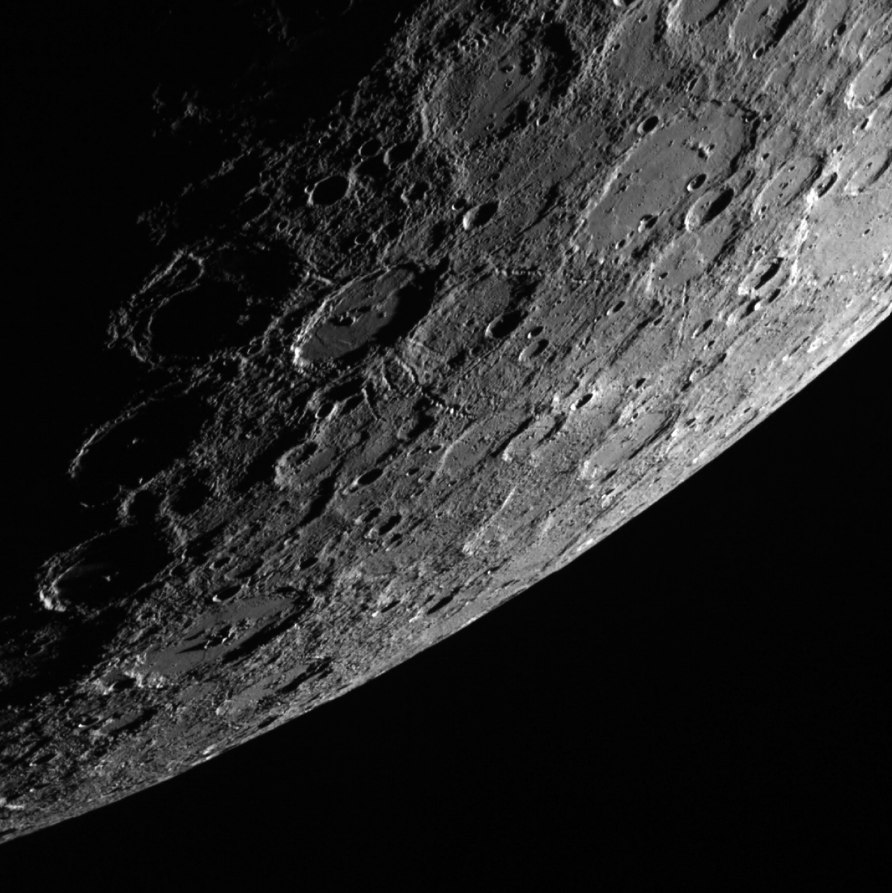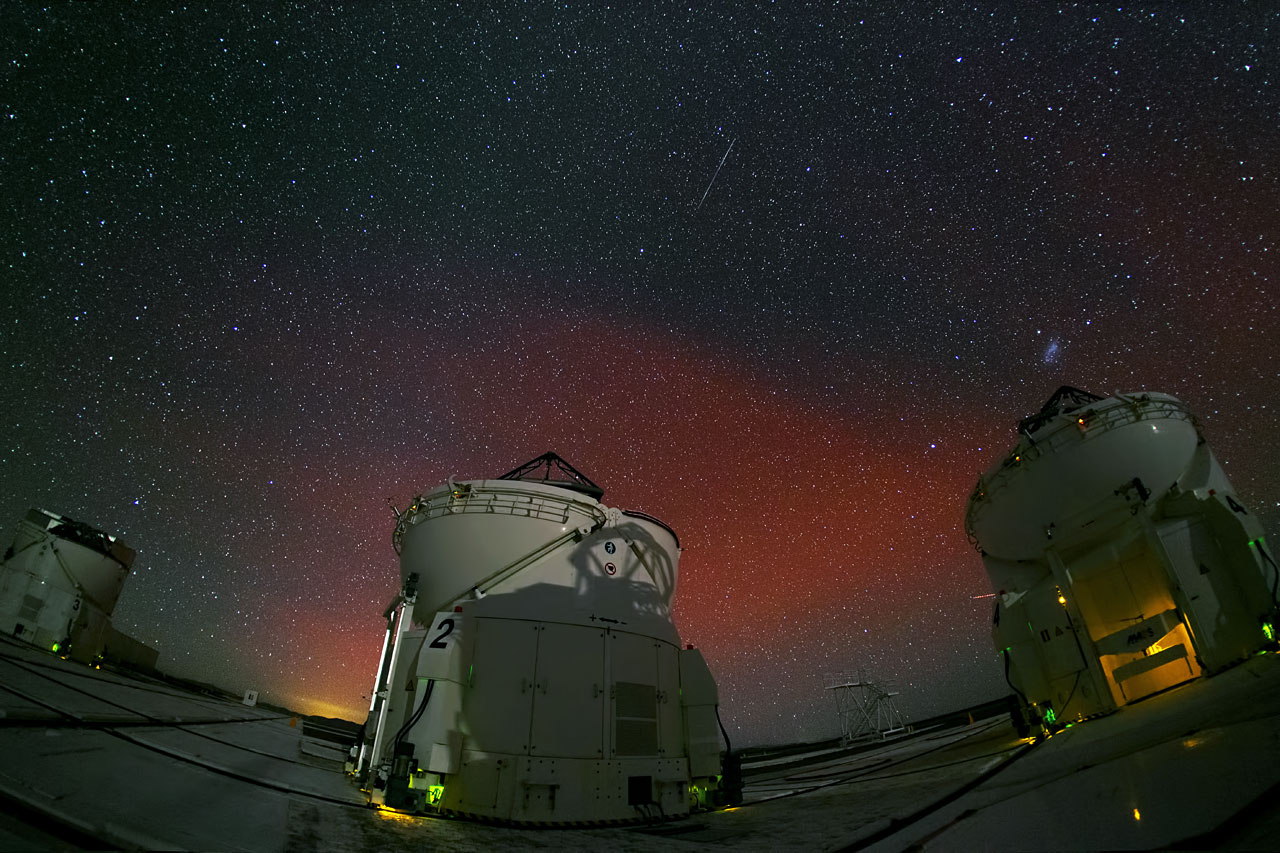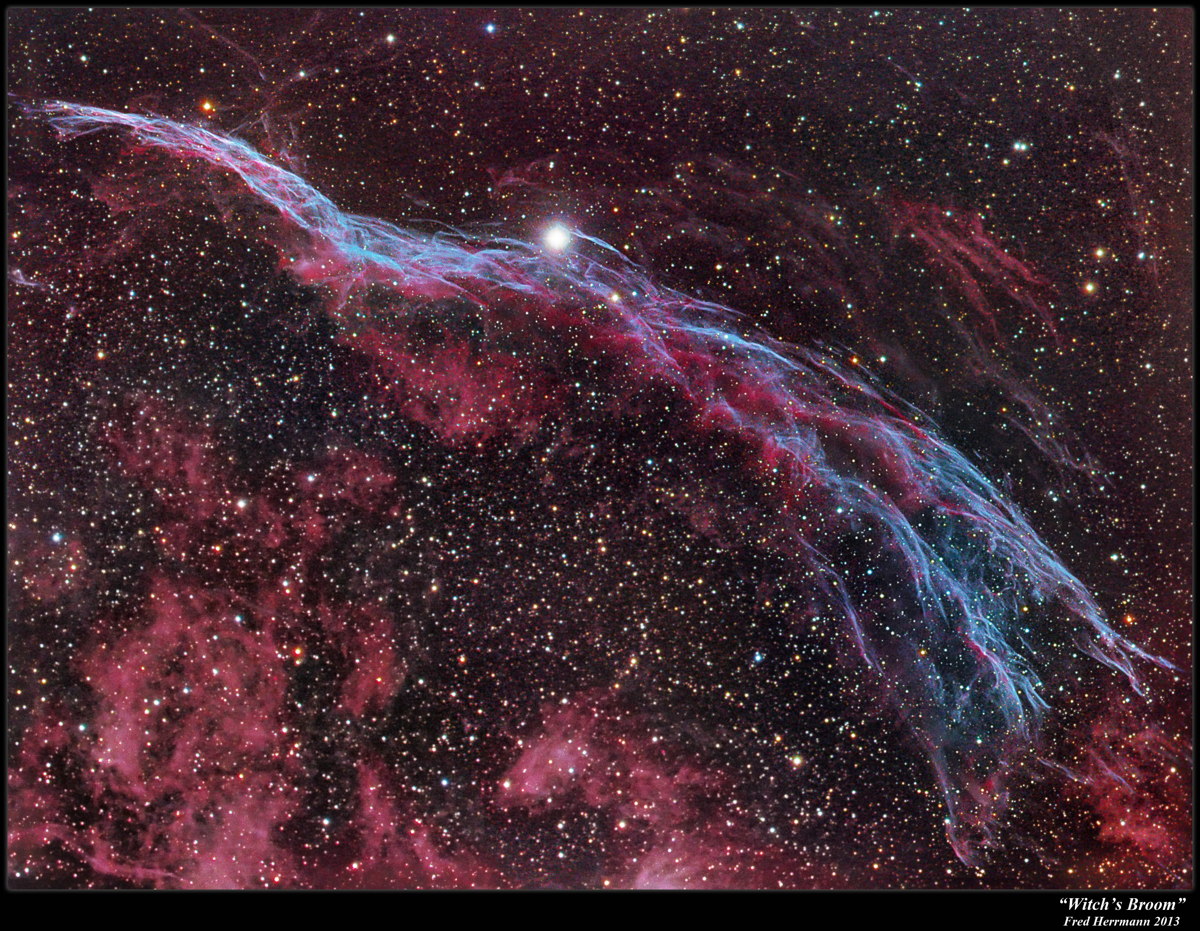Space Image of the Day Gallery (October 2013)
Standing in the Shadows
Tuesday, Oct. 29, 2013: NASA's MESSENGER spacecraft obtained this image of planet Mercury’s horizon, while looking out from the shadows toward the sunlit side of the planet on Oct. 2, 2013. A 75-mi. (120-km) impact crater stands out near the center. Chains of secondary craters gouge linear tracks radially away from the unnamed crater. This crater does not seem particularly fresh (its rays have faded), it does appear to posssess more prominent secondary crater chains than many other nearby.
— Tom Chao
Red Sky at Night
Wednesday, Oct. 30, 2013: An eerie red glow hangs in the night sky over Chile’s Atacama Desert. In the foreground stand three of the four VLT Auxiliary Telescopes of the Paranal Observatory. The four 1.8-meter telescopes work together in concert to form a single giant interferometer, the ESO Very Large Telescope Interferometer, allowing astronomers to see details up to 25 times more finely than with the individual telescopes. The red light in the sky is known as airglow, caused by light-emitting chemical reactions in the atmosphere. Airglow occurs constantly, but usually remains very faint. On the night this photo was taken, airglow emissions radiated especially brightly.
— Tom Chao
Broom with a View
Thursday, Oct. 31, 2013: Happy Halloween from SPACE.com! Just in time for Halloween, astrophotographer Fred Herrmann sent in a photo of the "Witch's Broom," NGC 6960, part of the Veil Nebula. The nebula appeared when a massive star exploded roughly ten thousand years ago, leaving behind a dim glowing cloud. It stretches 35 light years, lying 1400 light years away in the constellation of Cygnus. The Veil Nebula is so large, sections of it received individual names, as in the Western Veil, also known as the Witch’s Broom or NGC 6960. The glowing light stems from the shock wave of the star explosion exciting interstellar material. The star at the center, 52 Cygni does not relate the nebula, and appears visible to the unaided eye from dark locations. Herrmann took the photo from his Owl Mountain Observatory on Blue Mountain in Huntsville, AL. Photo dated 2013.
— Tom Chao
Breaking space news, the latest updates on rocket launches, skywatching events and more!




